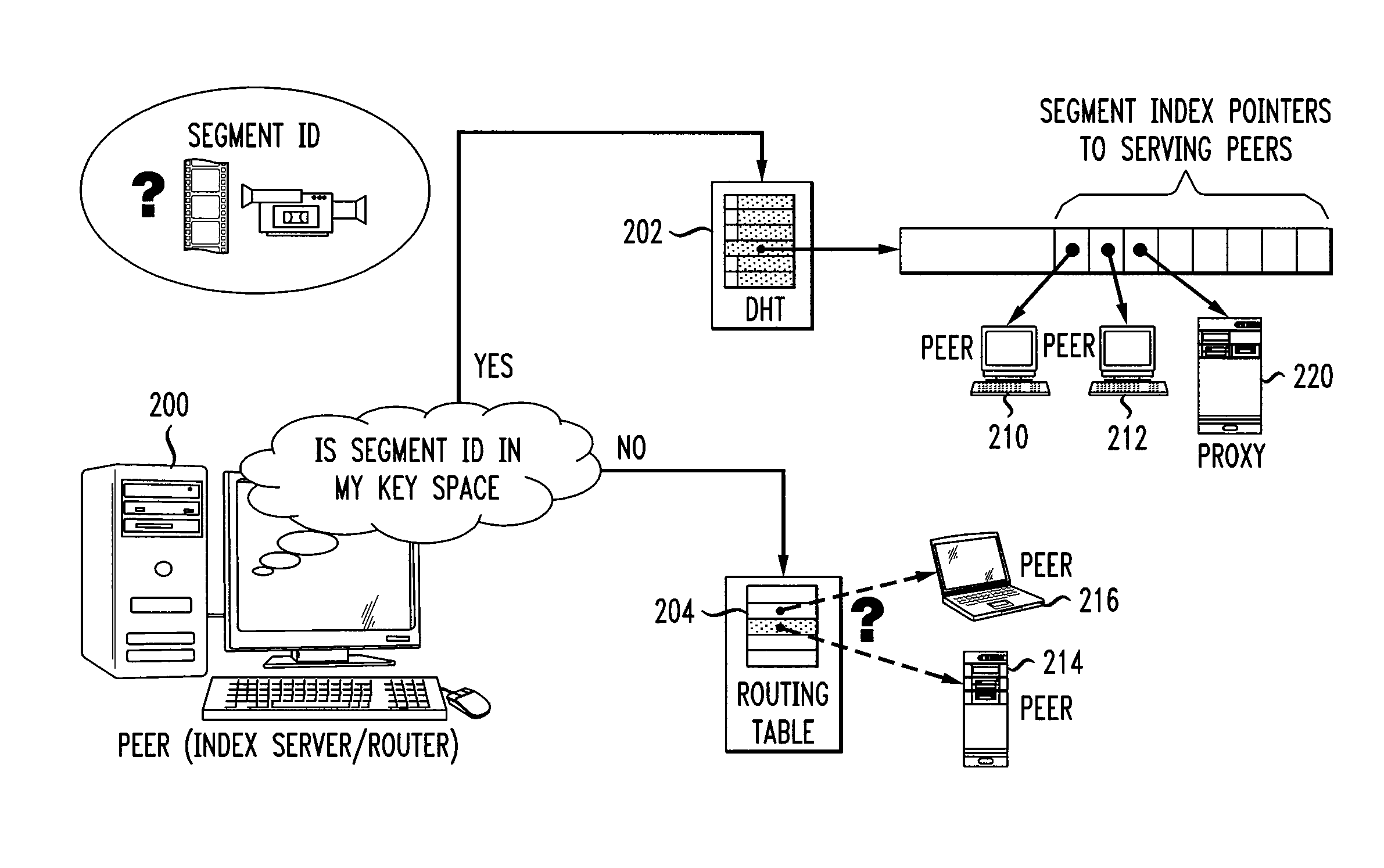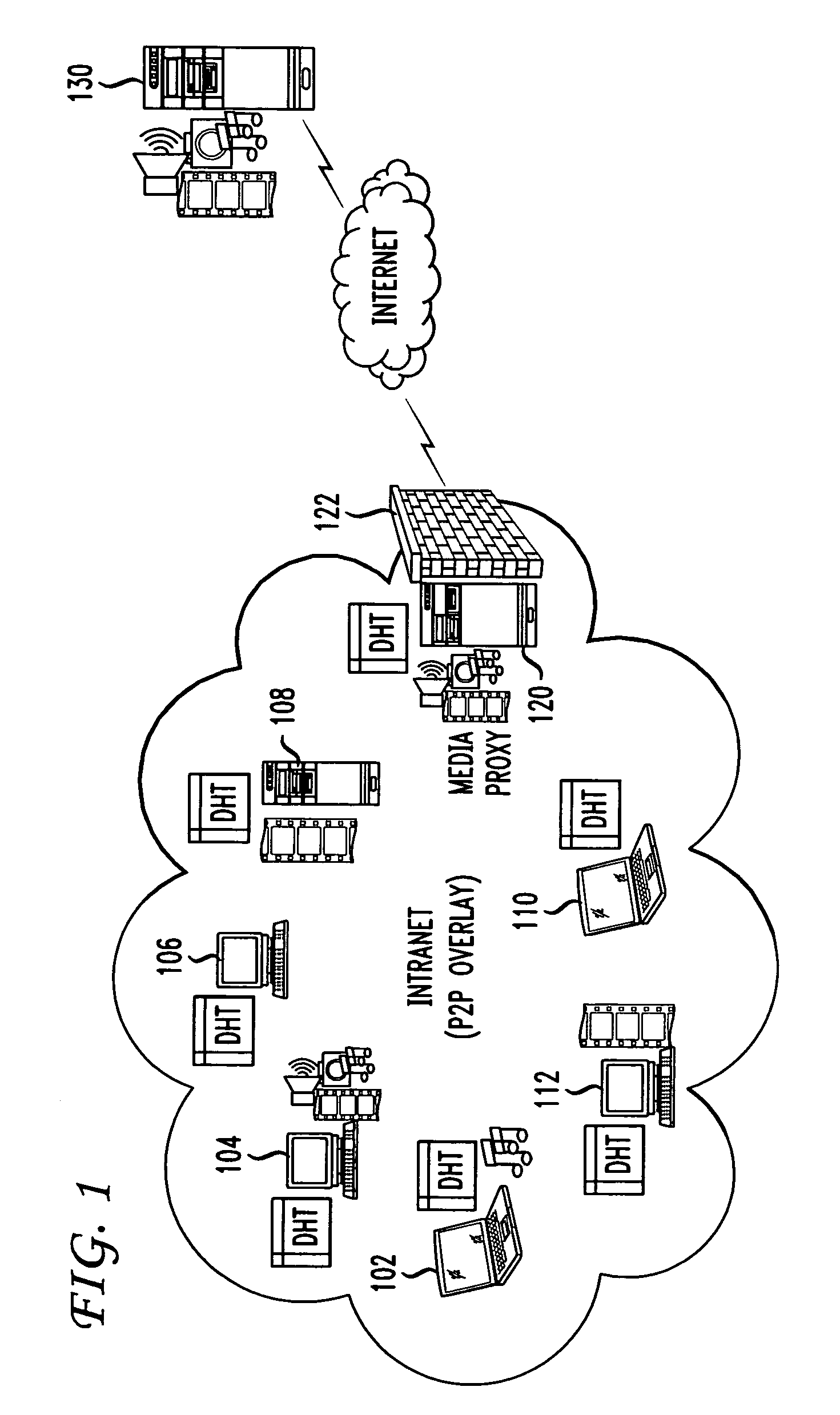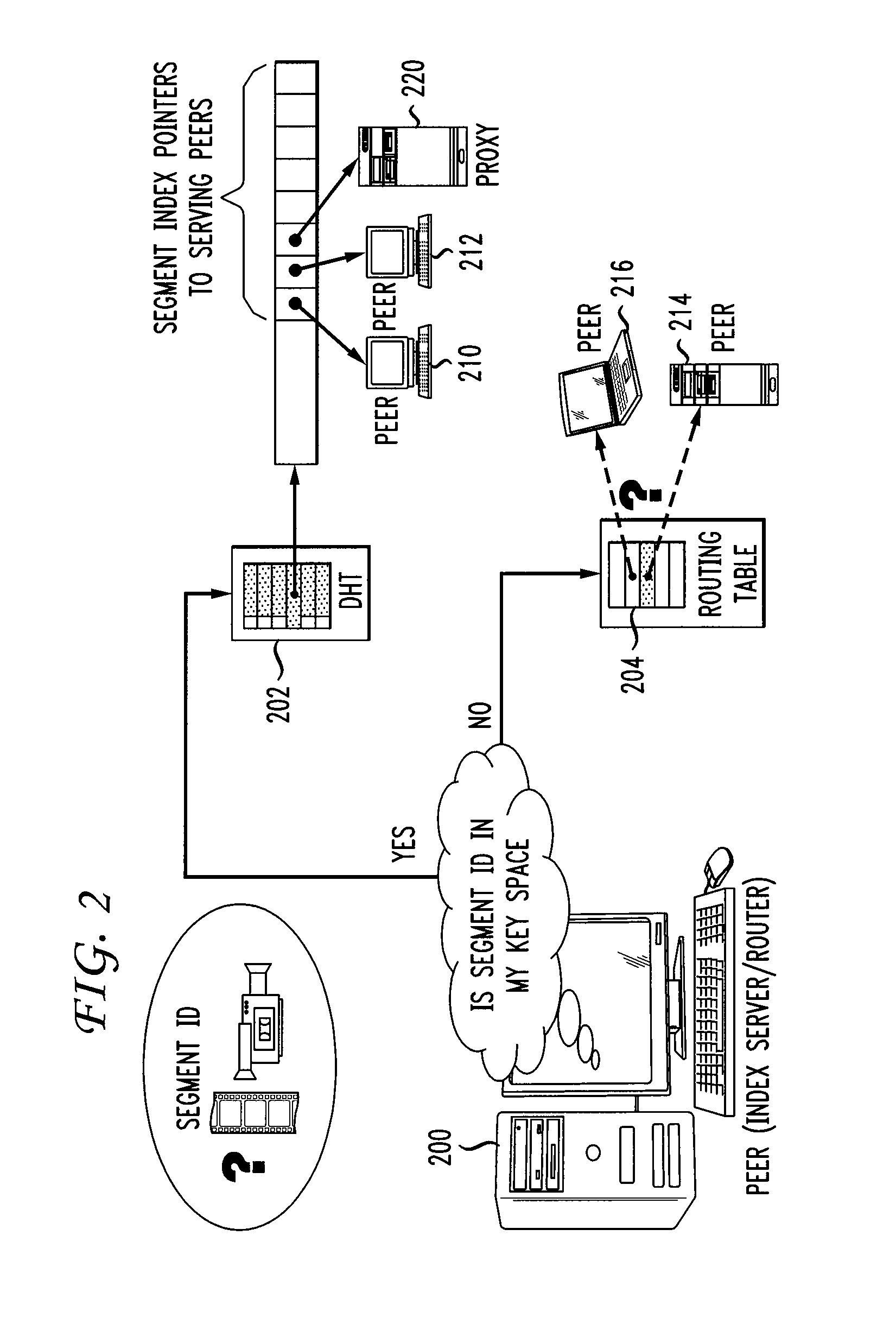System and method for streaming media objects
a media object and media technology, applied in the field of streaming multimedia content over the internet, can solve the problems of reducing latency and network traffic, delivering streaming multimedia content with high quality and low cost over the internet, and proxies are limited in the amount of media data they can cache for clients
- Summary
- Abstract
- Description
- Claims
- Application Information
AI Technical Summary
Benefits of technology
Problems solved by technology
Method used
Image
Examples
Embodiment Construction
[0017]FIG. 1 illustrates a streaming proxy system according to an embodiment of the present invention. As illustrated in FIG. 1, the streaming proxy system includes a group of end nodes 102, 104, 106, 108, 110, and 112 and at least one core node 120, which are all connected via a peer to peer (P2P) overlay network. A P2P overlay network is a network built on top of another network (i.e., the Internet). Each node in the P2P overlay network is connected by virtual or logical links, each of which corresponds to a path which may pass through multiple physical links in the underlying network. The end nodes 102, 104, 106, 108, 110, and 112 can be general purpose servers, end users, or the like. Moreover, the end nodes 102, 104, 106, 108, 110, and 112 can be clients which request media objects. Each end node 102, 104, 106, 108, 110, and 112 functions as a streaming server that provides media streaming service to clients by caching the media data in segments and sharing the cached data with...
PUM
 Login to View More
Login to View More Abstract
Description
Claims
Application Information
 Login to View More
Login to View More - R&D
- Intellectual Property
- Life Sciences
- Materials
- Tech Scout
- Unparalleled Data Quality
- Higher Quality Content
- 60% Fewer Hallucinations
Browse by: Latest US Patents, China's latest patents, Technical Efficacy Thesaurus, Application Domain, Technology Topic, Popular Technical Reports.
© 2025 PatSnap. All rights reserved.Legal|Privacy policy|Modern Slavery Act Transparency Statement|Sitemap|About US| Contact US: help@patsnap.com



